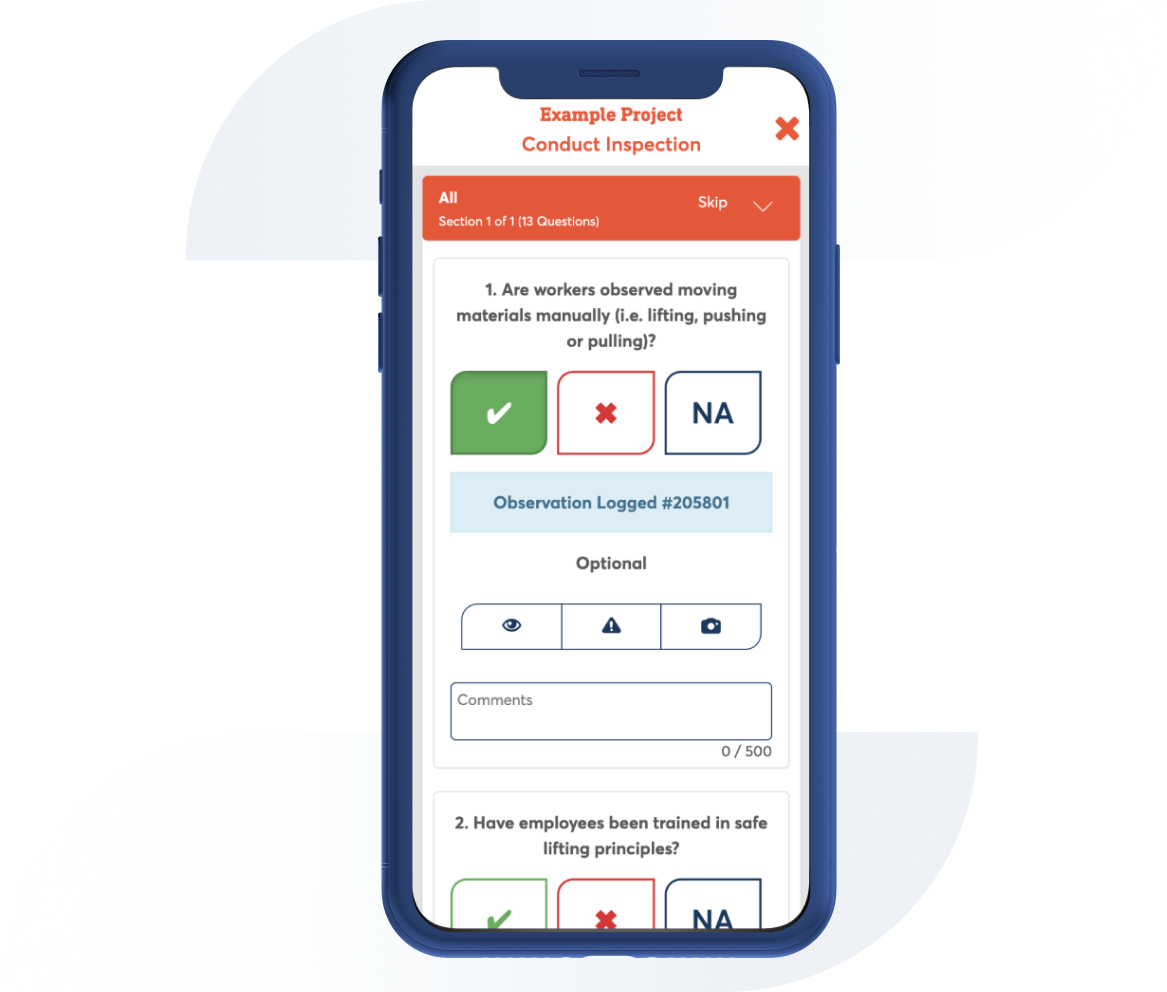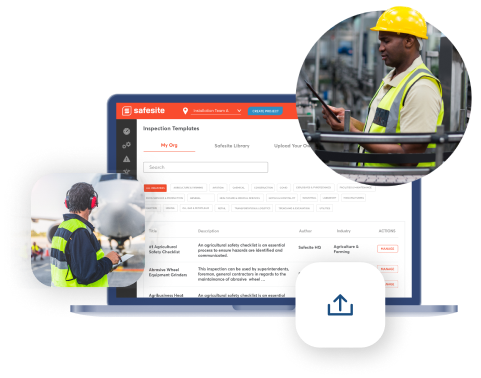OSHA Crane and Derrick Safety Inspection Checklist
Contributor: Safesite Jurisdiction: OSHA
This OSHA inspection checklist can be used to ensure that during general use and operation, crane machinery is equipped properly and determined as safe both before operation begins and during usage.

Template Preview
1. Has the cranes annual inspection been completed by a qualified person and documented?
Actions
2. Has the cranes monthly inspection been documented?
Actions
1. Is the wire rope free of any of the following problems? Significant distortion such as kinking, crushing, unstranding, birdcaging, signs of core failure of steel core protrusion between the outer strands; Broken or cut strands; Significant corrosion; Electric arc damage from a source other than power lines; heat damage; improperly applied end connections; significantly corroded, cracked, bend or worn end connections.
Actions
2. Are the rated load capacities, operating speeds, special hazard warning and/or instruction posted on equipment?
Actions
3. Did a walk around inspection find problems with any of the following? welds, end connections, lacings, chords, ball and hook, jib, sheaves, boom, outriggers, hook block.
Actions
4. Are operational aids and safety devices in working order? (Crane level indicator, Boom stops, jib stops, locks on foot pedal brakes, hydraulic outrigger jacks, and hydraulic stabilizer jacks, rail clamps and stops if equipment is on rails,horn, boom hoist limiting device, luffing jib limiting device, anti-two-block device, boom angle or radius indicator, jib angle indicator, boom length indicator, load weight, load moment, hoist drum rotation indicator, outrigger position)
Actions
5. Are the tires inflated and in good condition?
Actions
6. Does the cab have a fire extinguisher?
Actions
7. Are the fluid levels optimal? Crankcase oil, coolant, hydraulic oil, etc.
Actions
8. Has a functional test been completed?
Actions
1. Is the equipment set up by a person who meets the requirements of both a competent person and qualified person? (or by a competent person assisted by one or more qualified persons)
Actions
2. Can the ground support the load of the crane?
Actions
3. Is the crane placed so that no part of the crane can come in contact with overhead power lines? Or are power lines de-energized?
Actions
4. Is there enough room to set up the crane?
Actions
5. Has the operator and riggers been given the load weights?
Actions
6. Is the crane barricaded to prevent personnel coming in contact with the counterweight or in the swing pattern of the load?
Actions
7. Are outriggers fully extended and placed on a solid surface?
Actions
8. Has the crane been leveled?
Actions
9. Has the current weather conditions been evaluated for a safe lift?
Actions
10. Has the communication method (voice or signal) been established between the crane operator and signal person?
Actions
1. Was the evolution of the lift free of hazardous situations? Examples are tipping, two-blocking, backward collapse of boom, uneven winding, slack in the wire rope, dropping the load or any other hazardous situation.
Actions
2. If the crane is left unattended where the following items completed: Land any load, bucket or other device, disengage master clutch, place all control levers in neutral, set all brakes and locking devices, secure the crane against accidental travel , shut the engine.
Actions
3. Are the procedures applicable to the operation of the equipment readily available in the cab?
Actions
4. If the equipment is out of service is an out-of-service tag placed in the cab in a conspicuous position?
Actions
5. Write Comments or Remarks here:

Can't find what you are looking for?
